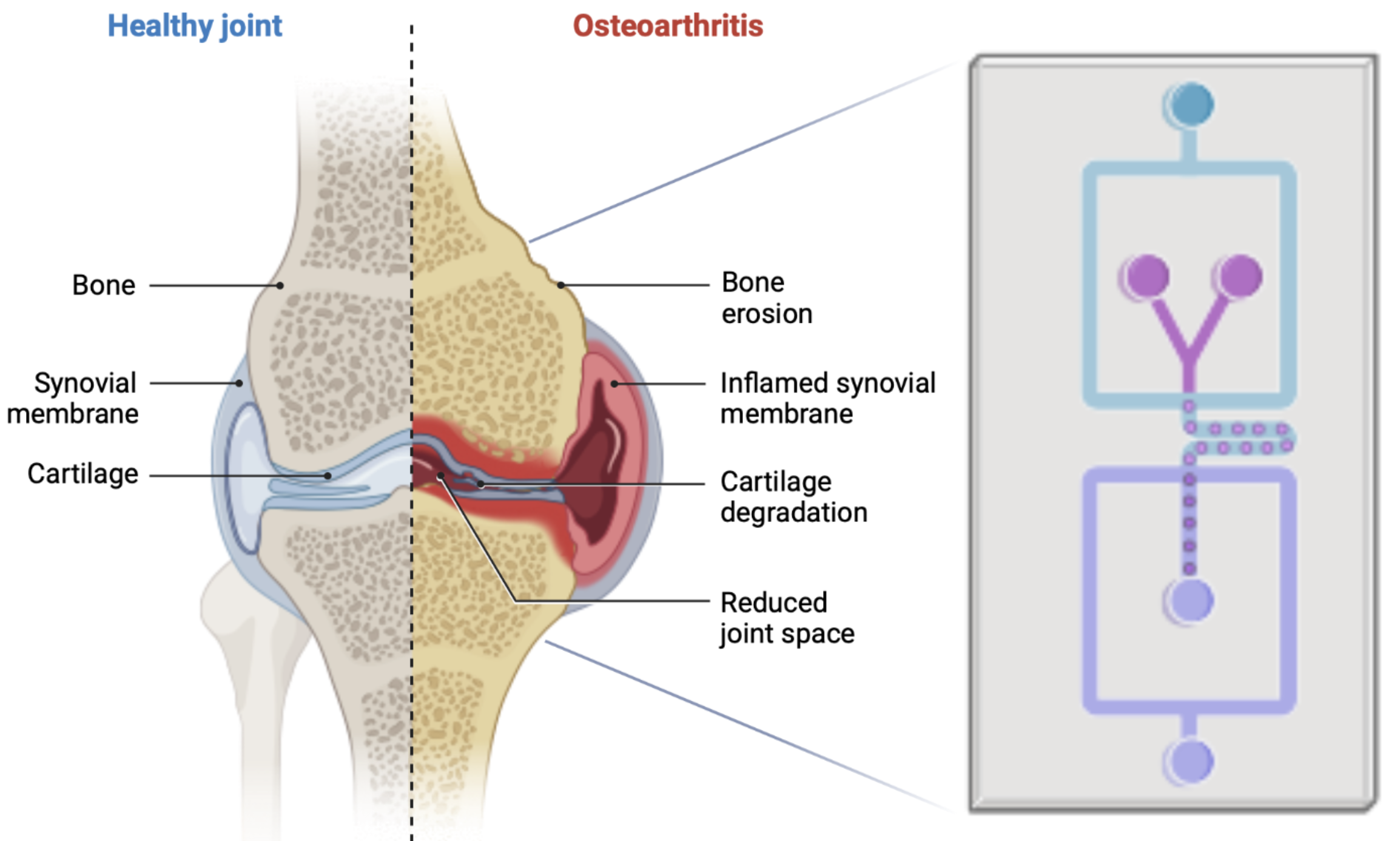Development of an Actuated Human-Engineered Cartilage-on-Chip Model for Investigating Joint development and Osteoarthritis Pathophysiology
Collaborators
PI:
Prof. Marcy Zenobi-Wong, Tissue Engineering and Biofabrication, Department of Health Sciences and Technology, ETH Zurich
Fellow:
Hao Liu, Tissue Engineering and Biofabrication, Department of Health Sciences and Technology, ETH Zurich
Collaborators:
Dr. Philipp Fisch and Dr. Parth Chansoria, Tissue Engineering and Biofabrication, Department of Health Sciences and Technology, ETH Zurich
Margherita Bernero, Dr. Xiao-Hua Qin and Prof. Ralph Müller, Micro-Tissue Engineering and Biomaterials Team, Laboratory for Bone Biomechanics, ETH Zurich
Ali Kerem Kalkan and Prof. Ori Bar-Nur, Laboratory of Regenerative and Movement Biology, ETH Zurich
Rodrigo Castillo-Acuña and Prof. Dennis Kochmann, Mechanics and Materials Laboratory, ETH Zurich

Project description
Conventional models used for studying joint diseases, such as osteoarthritis, possess inherent limitations in accurately simulating the complex nature of these diseases and in facilitating the development of effective therapeutics. By leveraging a cartilage-on-chip system, researchers can recreate physiological conditions and study the effects of mechanical stimuli and different inflammatory cytokines on cartilage growth and the subsequent development of joint diseases. The cartilage-on-a-chip system provides a controlled microenvironment that mimics the native extracellular matrix, cell-matrix interactio ns , and mechanical forces experienced by cartilage in vivo. Cartilage-on-chip allows for precise control and manipulation of mechanical loading parameters, enabling the investigation of the direct impact of mechanical stimuli and inflammatory cytokines on cartilage physiology and disease progression . As a high-throughput platform, Cartilage-on-chip enables the screening of potential therapeutics, facilitating the rapid evaluation of drug efficacy and toxicity.
Goal
In this work, we aim to develop a cartilage-on-chip model with human-engineered hyaline cartilage which mimics the structure and biochemical composition of native cartilage. With this model, we can first study how the morphology of the joint develops in response to mechanical loading. The model will also be used to study how joints response to mechanical injury and inflammatory conditions, thus providing an in-vitro platform for investigating the pathophysiology of osteoarthritis in human patients . The premise of our work is to recreate an articular cartilage model that closely resembles the native tissue including the joint articulation. Through this approach, we aim to recapitulate the intricate interplay between mechanical stimuli and cellular responses, shedding light on the underlying mechanisms of osteoarthritis progression in a human-specific context.
Methodology
To create human engineered cartilage with similar biochemical composition and mechanical properties to native tissue, we combine human polydactyly chondrocytes with a hyaluronan hydrogel and observe the growth and maturation process over time. In order to induce osteoarthritic-like changes, we subject the cartilage to hyperphysiologic amounts of cyclic mechanical compression and shear. The OA phenotype can be assessed by label-free Raman imaging method that can simultaneously identify the 3D distribution of multiple biomolecules inside the cartilage construct, thus enabling a deeper understanding of the pathological development in human cartilage.
